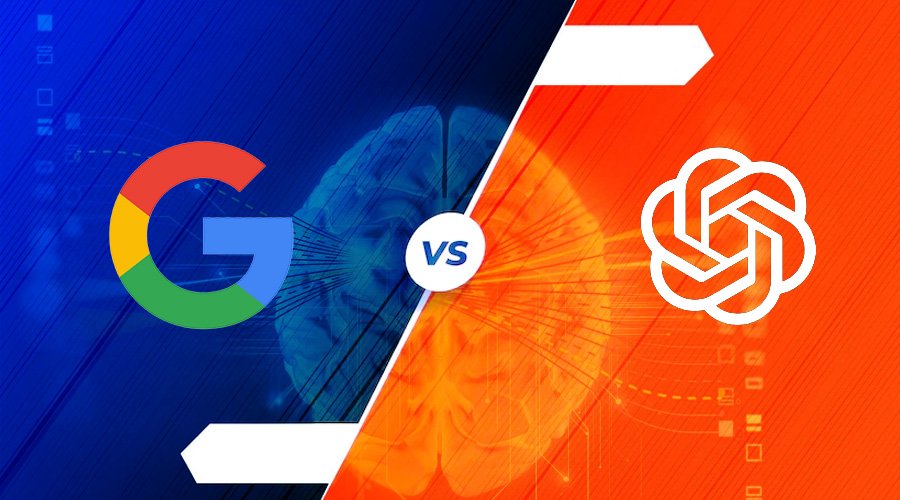- +91-90690-22697
- info@egadgetportal.com

Nothing has more deceived the human mind than artificial intelligence bots. With the launch of Open AI’s cutting-edge chatbot ChatGPT, debates on whether AI will replace humans in jobs erupted. Chat GPT’s abilities range from writing poems to cliche rom-com to full-length research papers and articles to anything under the sun, with few restrictions though.
ChatGPT gained over a million users in less than a week, which seems insane, doesn’t it? Yes, since its launch on December 5th, it has taken the world by storm and fascinated creators worldwide. The rapid growth rate demonstrated that ChatGpt is unquestionably a threat to the search engine behemoth, Google, which currently controls nearly 92% of the market.
This led Google to enter the AI cat race with the recent launch of the ambitious AI-powered chatbot BARD. It would be interesting for users to see how far Google’s BARD gets in unlocking the potentiality of artificial intelligence and who prevails in the battle ChatGPT vs BARD.
In this article, we will go over the key features and differences between ChatGPT and BARD in depth.
ChatGPT is a generative Pre-trained Transformer (GPT) model-based conversational chatbot. Open AI’s advanced AI chatbot produces human-like responses to text-based inputs using natural language processing technology. This multi-functional tool can be used to generate text, translate it, summarise it, and analyze it.
Following the overwhelming success of ChatGPT, its creators launched ChatGPT Plus, a paid version available for a subscription fee. ChatGPT plus is an advanced and professional version that includes fine-tuning, increased scalability, an API, and better-customized solutions.
Some of the notable features of ChatGPT supported by one of Google’s biggest competitors, Microsoft, that have added new dimensions to creativity are as follows:
ChatGPT employs the auto-regression technique, which allows it to generate one word at a time while maintaining continuity with previously generated words. This tool aids in the creation of natural-sounding and logically sound responses. This means it can quickly generate reader-friendly and interesting text and dialogues. Feels thrilling, isn’t it?
ChatGPT is based on natural language programming (NLP). So it effectively fine-tunes datasets and tasks to derive results in a wide range of use cases like summarization, translation, and a lot more.
Before it was made available for public testing, ChatGPT was trained on huge datasets. Its massive exposure enables it to produce logically coherent search results.
ChatGPT uses this tool to break down complex words into simpler fragments or sub-words and then uses these simpler words to predict the next word in a logical order.
ChatGPT operates on a highly flexible model, making it a versatile tool for a wide range of applications such as natural language understanding, text generation, and dialogue systems.
BARD is a conversational bot driven by artificial intelligence and built on Transformer Technology, the foundation of ChatGPT and other AI applications. This experimental AI service is fueled by a lightweight version of LaMDA (Language Model for Dialogue Applications), which response to your search queries with high-quality results.
Unlike ChatGPT which allowed public testing soon after its launch to adapt this tool to meet the real-world challenges difficult to fix, BARD is currently available to trusted external testers only.
Regretfully, Google’s revolutionary chatbot, BARD, is not available for public use. However, Google has stated that it will soon be available for integration into your search engine to provide you with more responsive and generative search results.
BARD is still under development and is only available to a small group of trusted testers. Google will make BARD available to the public as soon as it can successfully adapt to find up-to-date answers to real-world problems or text prompts.
The tech conglomerate recently posted a GIF video of Bard in action on Twitter just hours before the launch of Bard in Paris. The video was to demonstrate the ability of the chatbot to simplify complex topics where Bard was questioned “What discoveries of James Webb Space Telescope “(JWST) can I tell my 9-year-old about?”.
JWST was used to take the first pictures of planets outside the Earth’s solar system, known as exoplanets, according to Bard’s response to the query. Reuters first discovered the error, which revealed that the European Southern Observatory’s Very Large Telescope (VLT) captured the first images of exoplanets in 2004. NASA later confirmed this as well.
As a result, Google’s stock dropped nearly 9% during normal trading, with volumes nearly three times the 50-day moving average. This blunder cost nearly $100 million in a matter of moments.
To understand the differences better, let us glance through the chart below-

Conclusion
ChatGPT, backed by Microsoft, instantly became an internet sensation, triggering a red code alert in its largest competitor Google. When Microsoft announced the inclusion of ChatGPT in its Bing search engine and Edge browser, the situation became even direr for the tech behemoth.
To shore up its dwindling position, Google announced its AI-generated chatbot, BARD, in response to its rival chatbot. Google’s venture is thought to be revolutionary in the world of Artificial Intelligence because when an AI bot is infused with Google’s vast database, it can perform miracles that defy human limitations.
Recent Post
Enquire now
Services
Sector
How Can I Help You 🙂 !!!